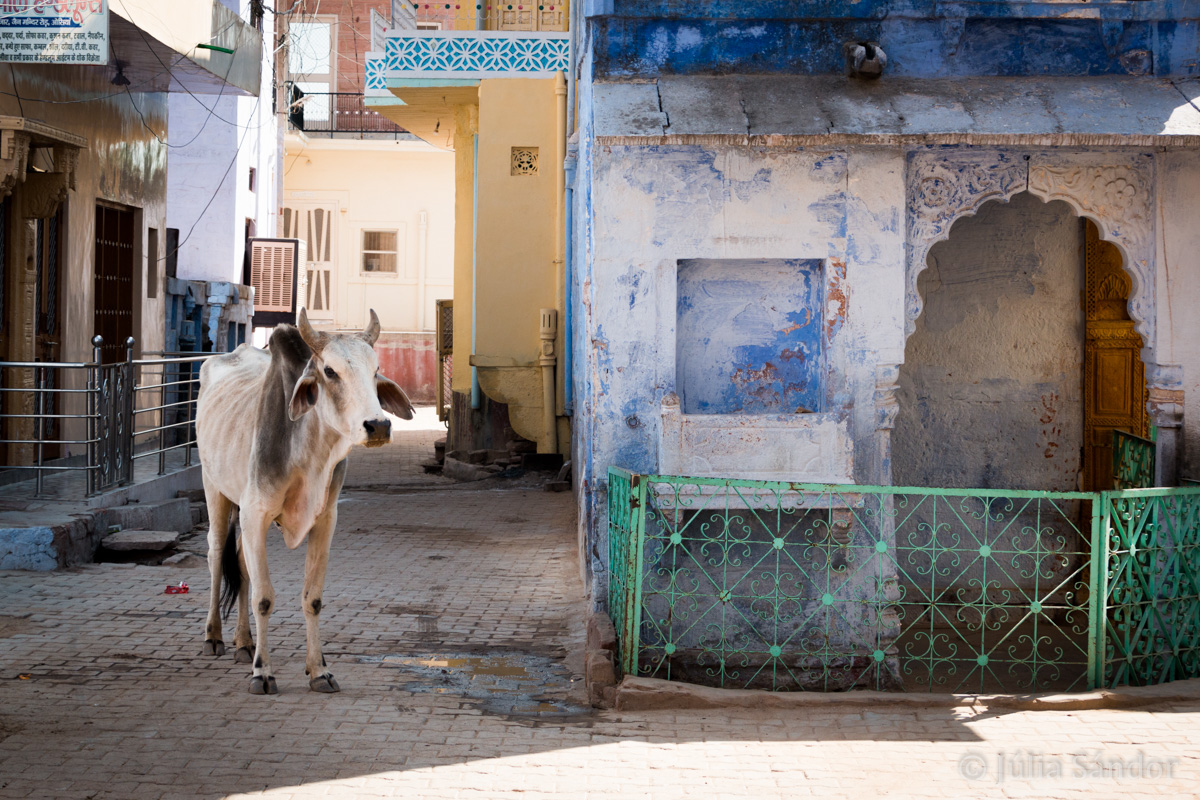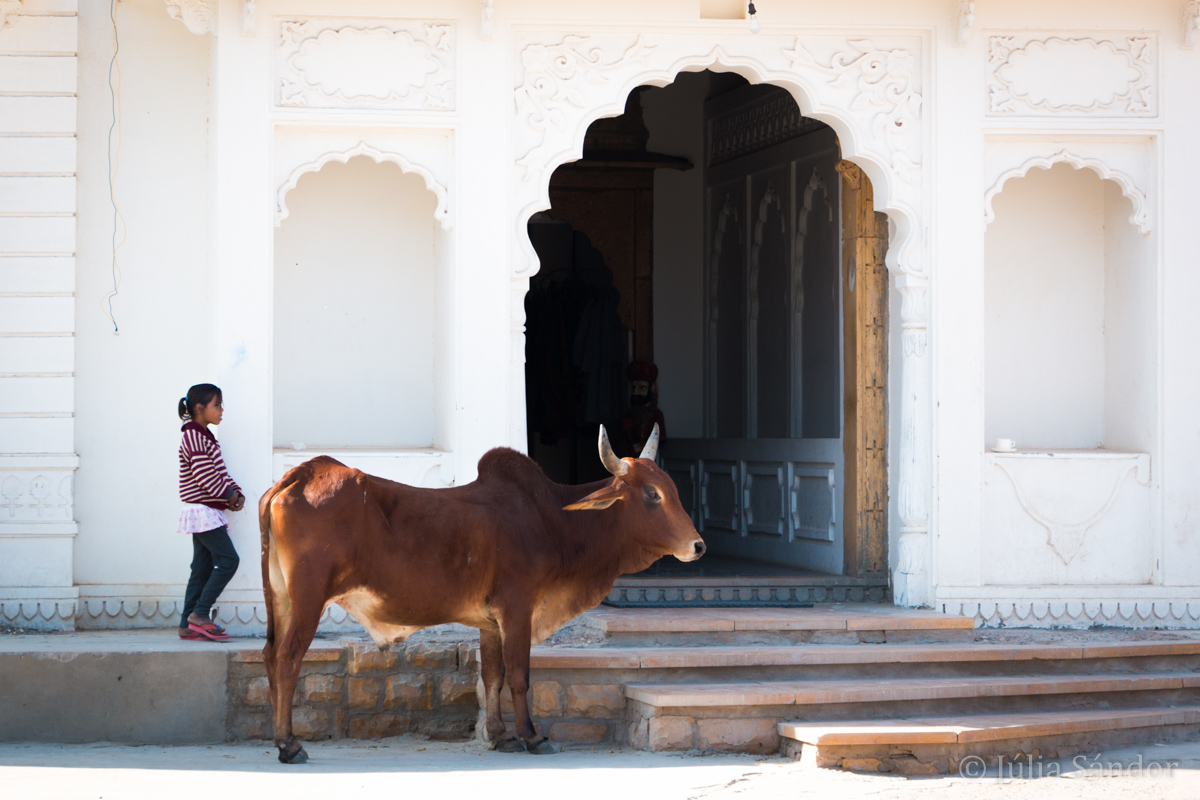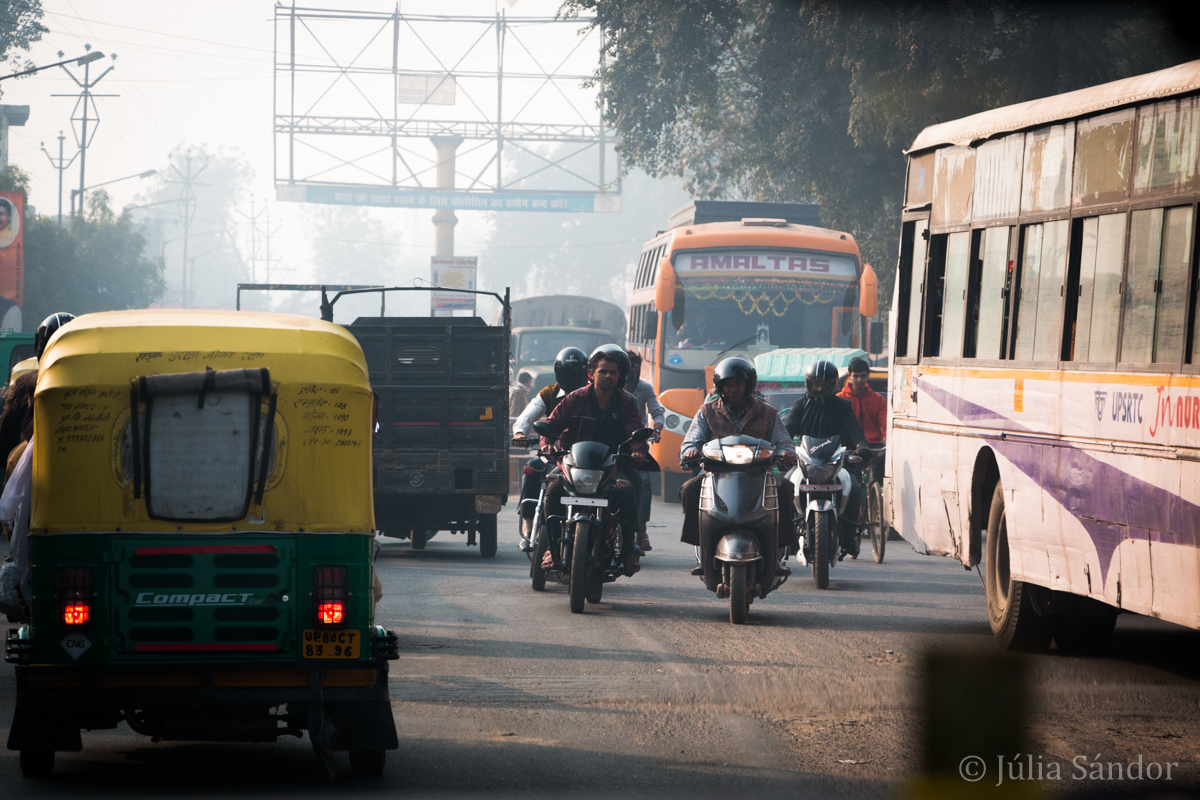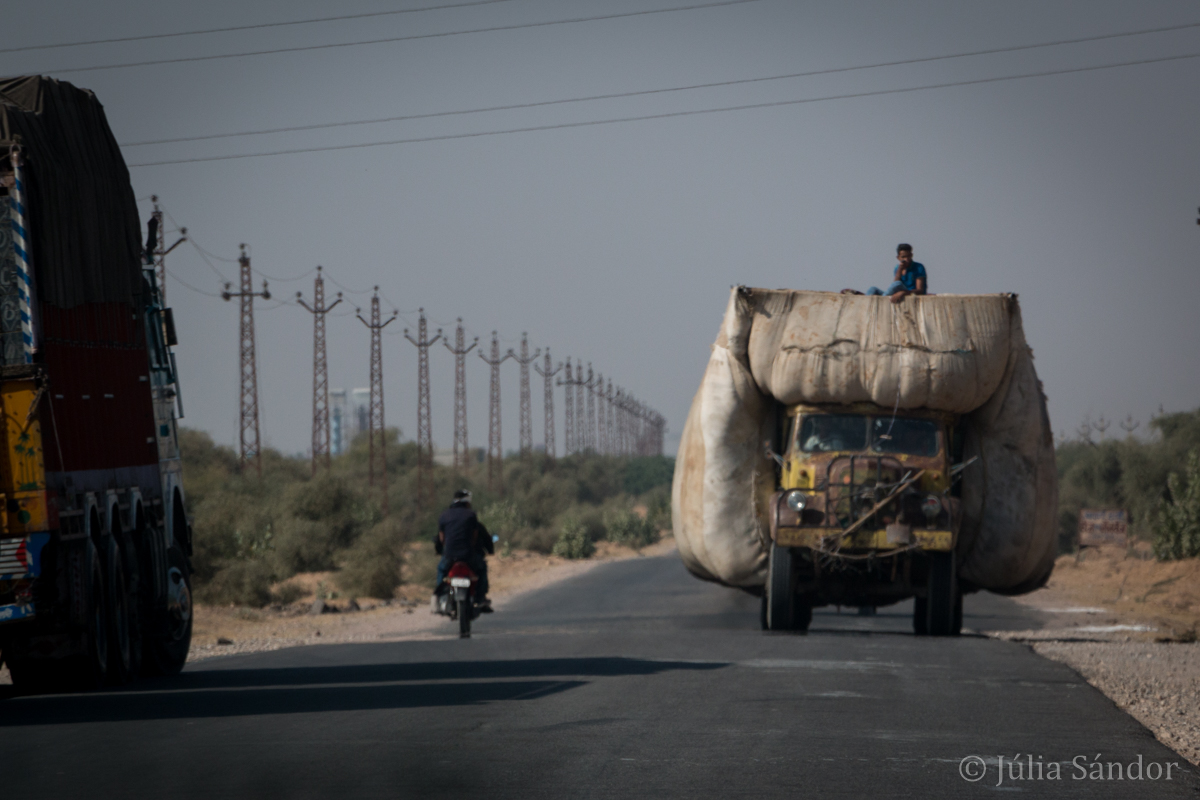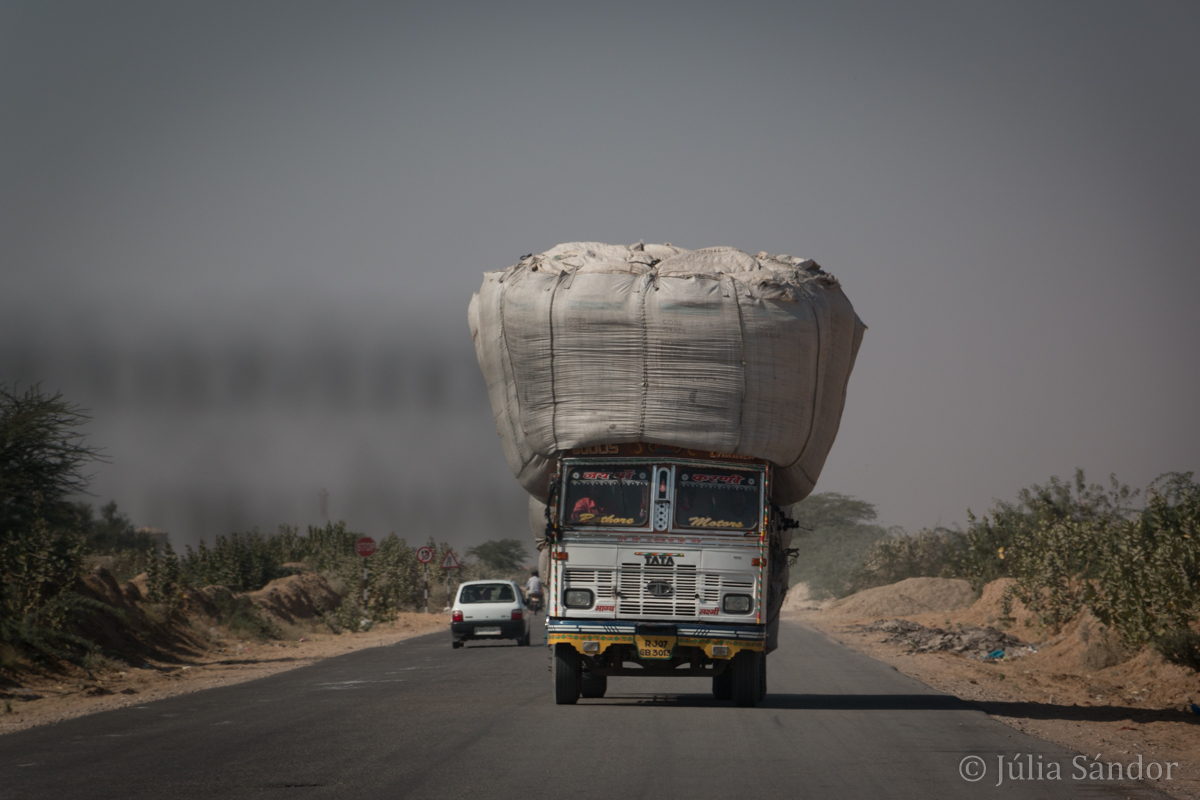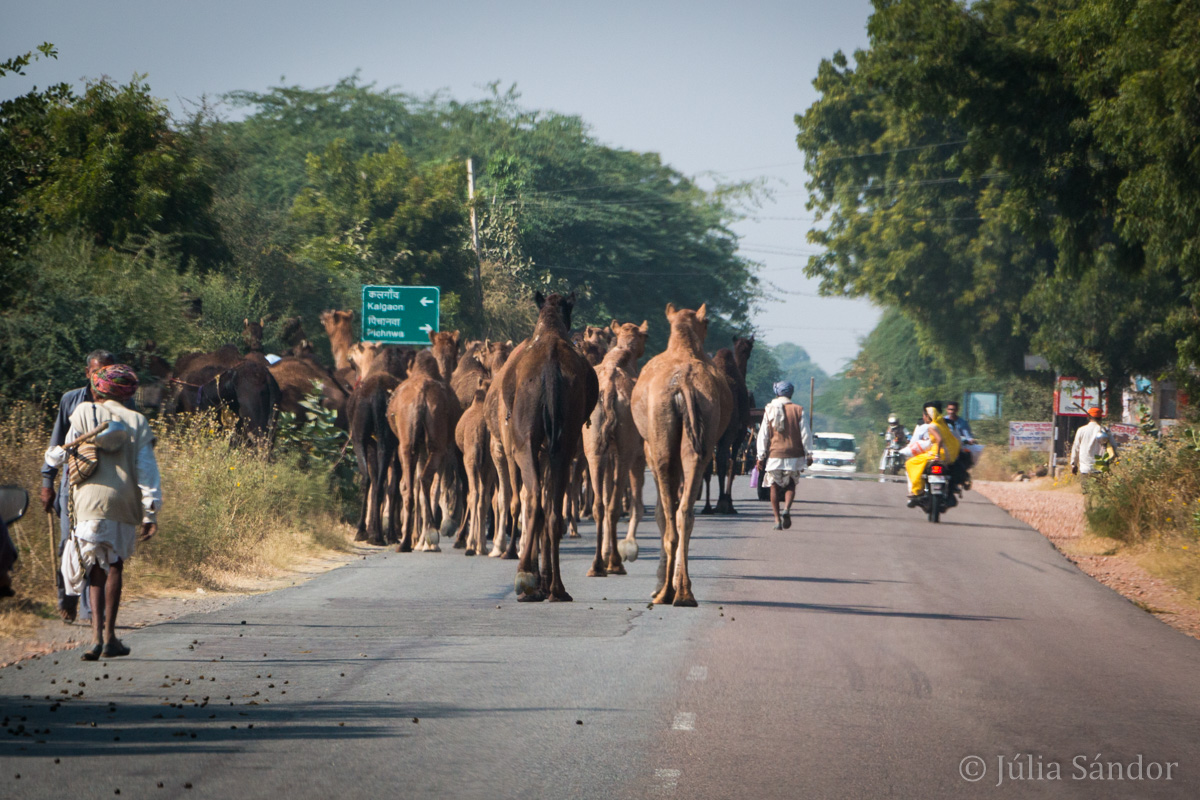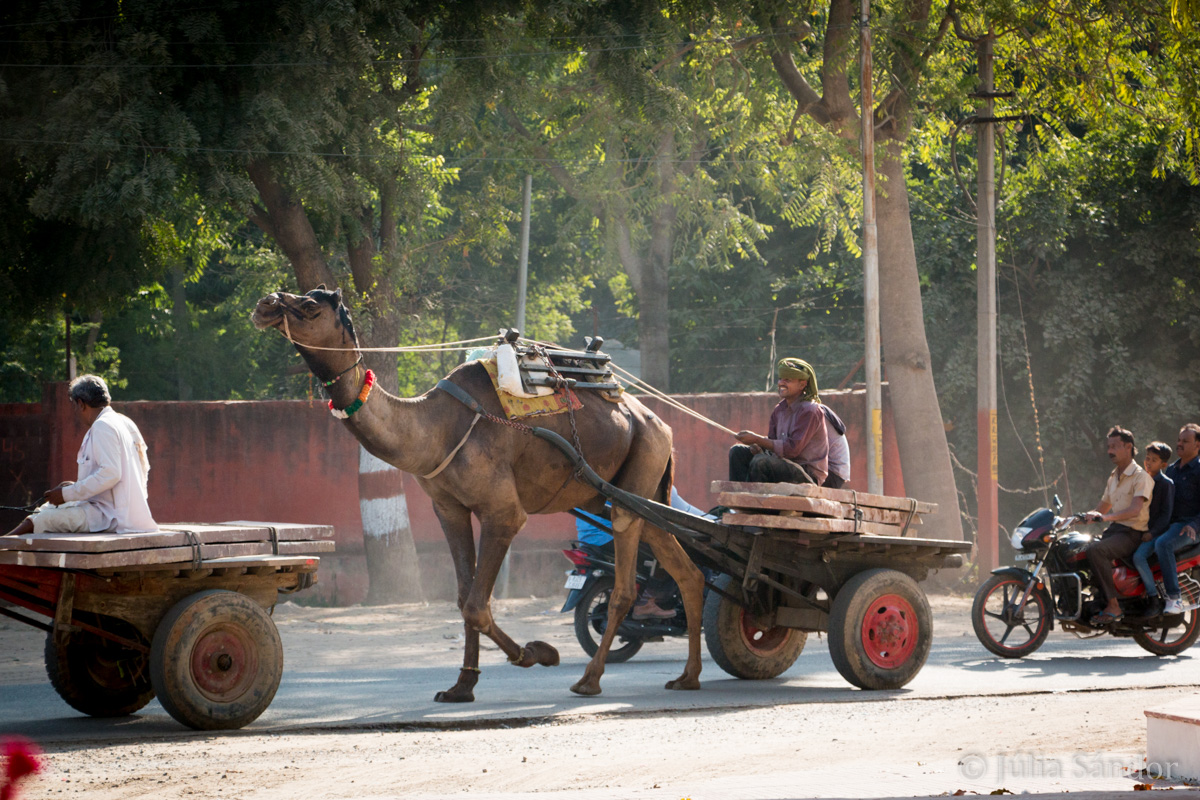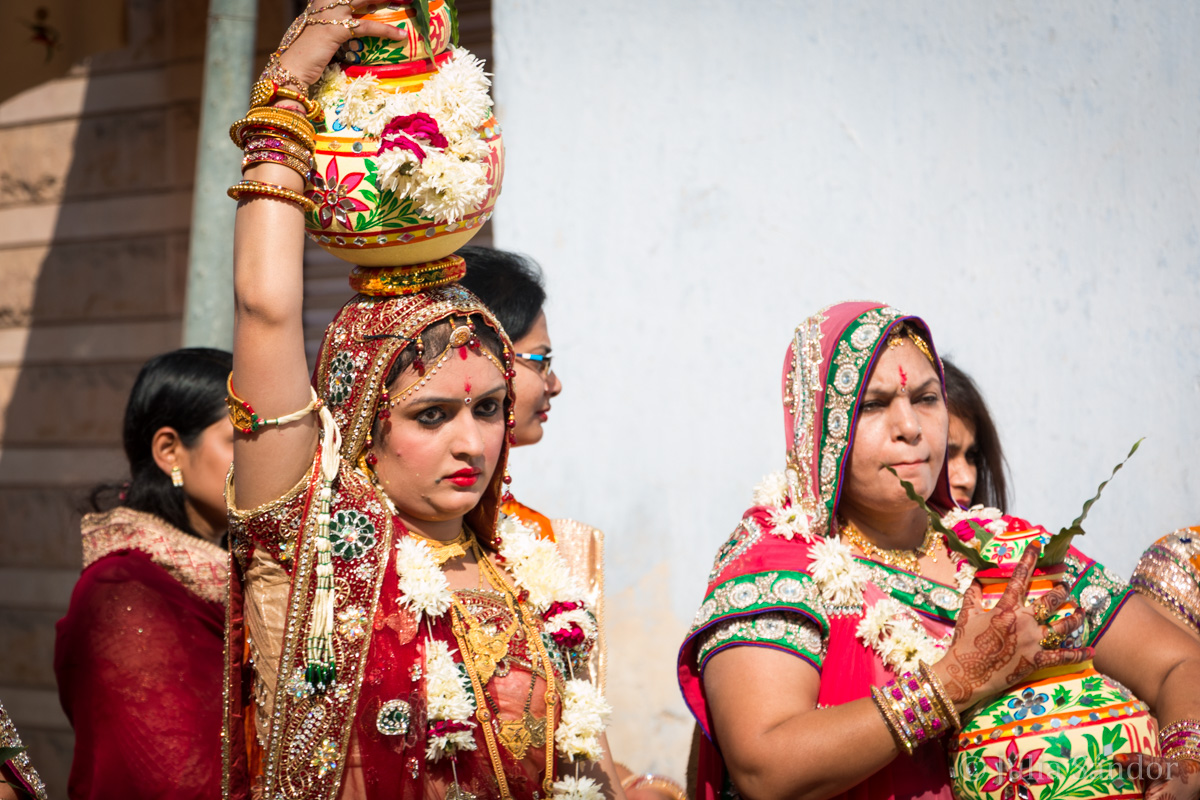This time we collected some specialties we faced in India which we thought would be interesting for you. Although there are several topics which would fit into this article, we chose the 3 which we found most fascinating.
Traffic in India
We cannot believe anymore, that we seriously considered renting a car and driving ourselves here… Driving in India is pure madness if you are not used to it, and can only work in a society believing in reincarnation. Vehicles are moving everywhere!!! And when we are talking about vehicles we mean: cars, buses, trucks, tractors, scooters, bicycles, rickshaws, coaches, camel carriages, elephants, horses, and whatever has wheels (or legs). Wherever there are 5 centimeters someone tries to pass through.

There is a constant honking and drivers are dipping the headlights to warn off others all the time (trucks even “request” you to do so). Cars and trucks drive on narrow streets heading towards each other and only in the very last moment one of them gives way. You shouldn’t be surprised on the highway about trucks moving in the opposite direction. Definitely a game of nerves for the unexperienced European passengers.
(We were already excited about traffic in Vietnam – see here – but this is topping it by far.)
And to make things worse there are animals everywhere. Herds of goats and sheep roaming around even in larger cities, dogs trying to avoid being hit and of course cows resting in the middle of the street. Which leads us to our next topic:
The Holy Cow in India
We wondered why so many cows choose to lie on busy roads instead of going to safer areas. Recently we heard that there is a scientific explanation to that: apparently the density of flies is much lower there due to the exhausted gases from the cars and scooters. On top of it the cows themselves seem to get in good mood from the toxic fumes… They definitely look super relaxed even when cars pass by a couple of centimeters away.

And nobody honks when a cow is in the way. These animals are taken as part of nature or part of the landscape and are carefully circumnavigated. This is understandable given that cows stand on the highest rank among holy animals in India (others are monkeys, cobras, peacocks and bulls). So if they lie around in the middle of the street or cross the highway, they will be taken care of – and their behavior shows that they know. People feed cows on the street – it is said that every time a meal is cooked the first portion of roti (Indian bread) is presented to a cow.
The reason cows are so respected is multiple. Some of them are:
- From ancient times on people relied on the cows not only for nutrition (milk only), but also using its dung and urine as fertilizers, fuel and disinfectant.
- So they are very useful animals, and people here have a high respect for what is useful for them.
- They have an important role in religion as it is said that Krishna, was herding cows. The ghee, the clarified butter is used in ceremonies and in preparing religious food.
- Hindus believe that they can only reach Heaven if they cross a mythological river holding the tail of a cow.
Another Indian specialty is the way families are formed:
Arranged marriages and wedding ceremonies in India
When we asked our driver whether his marriage was an arranged one, he was just laughing and confirmed it, saying, that no one in his family ever married out of love. In his village of about 5000 inhabitants just 2 (two) people got married out of love. Someone else told us, that in big cities, like Delhi or Mumbai this is slowly changing, but the emphasize was on “slowly”.
The institution of arranged marriages is a tradition and is (mostly) not questioned. For a marriage to happen everything has to fit together: religion, caste, economic status, eating habits, profession – even the horoscope of the girl and boy. The family, neighbors and priests have the major role in the selection, the protagonists do not have a say in the matching process.
Although with European mind this seems unimaginable, it seems to somehow work here. India has the lowest divorce rate in the world – which of course also has economic reasons.

The weddings are celebrated very splendorous. We caught glimpses of some ceremonies, as they partially take place on the streets. We saw parades of the bride, parades of the groom, dancing on the streets, all of it with loud music, highly decorated and illuminated. Even on a simpler wedding there are supposed to be 1000-2000 guests. Weddings occur on any weekday, and the season, at least in Rajasthan, starts from August and lasts until about April.
Gallery
If the pictures this time are not that as appealing as usually, you have to forgive us: many of them were taken out of the moving car – as the topics would suggest.







